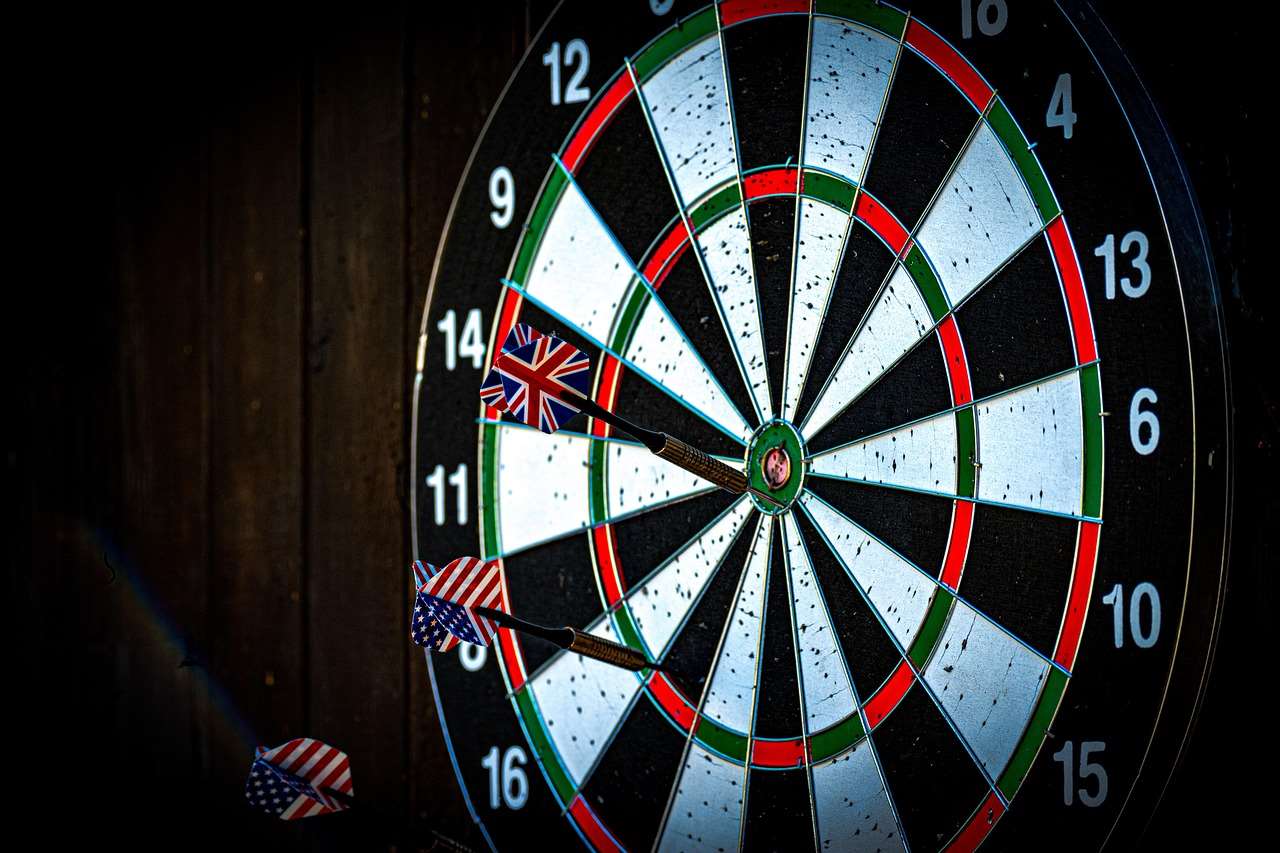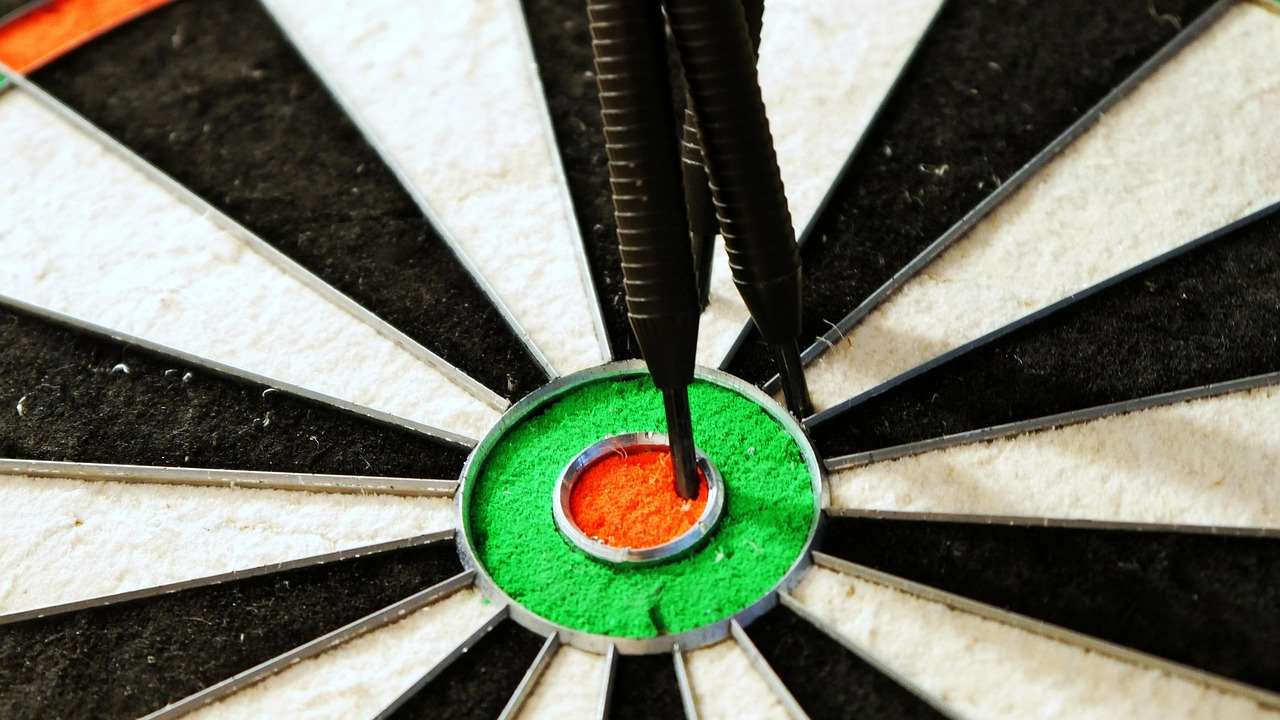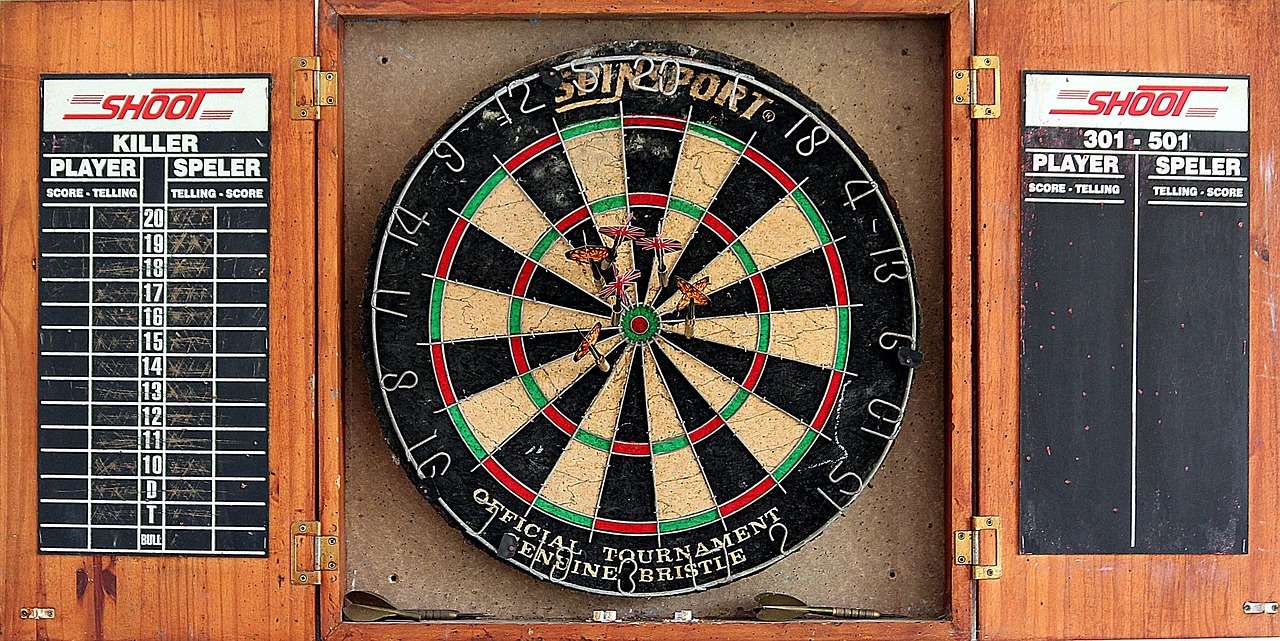Selecting the right dart weight for specific games is crucial for optimizing your throw and improving your overall performance. Generally, heavier darts are favored for stable, consistent throws while lighter darts offer more finesse; this article will guide you through choosing the ideal dart weight depending on your playing style and the game you’re playing, alongside tips to enhance your dart-throwing experience.
⚠️ Still Using Pen & Paper (or a Chalkboard)?! ⚠️
Step into the future! The Dart Counter App handles all the scoring, suggests checkouts, and tracks your stats automatically. It's easier than you think!
Try the Smart Dart Counter App FREE!Ready for an upgrade? Click above!
Understanding Dart Weight and Its Impact
The weight of a dart significantly affects its trajectory, stability, and how it feels in your hand. Dart weight is measured in grams (g), and darts typically range from 16g to 30g. Understanding how dart weight impacts your throw is the first step in selecting the right dart for you.
- Lighter Darts (16g – 22g): These darts are easier to throw and require less force. They can be advantageous for players with a smoother, more controlled throwing style. They also allow for more delicate adjustments during the throw.
- Medium Darts (23g – 26g): This is the most common weight range and offers a good balance between stability and control. Many players find this weight range comfortable and adaptable to different throwing styles.
- Heavier Darts (27g – 30g): Heavier darts tend to be more stable in flight and less affected by minor inconsistencies in your throw. They are often preferred by players who use a more forceful throwing style.
Experimenting with different dart weights is essential to finding what feels most natural and comfortable for you. Consider the following factors when making your decision:
- Your physical strength
- Your throwing style (smooth vs. forceful)
- Your personal preference

Choosing the Right Dart Weight For Specific Games
While personal preference plays a significant role, some general guidelines can help you choose the right dart weight for specific games. The most popular game, 501, is often played with darts in the mid-weight range, allowing for consistent scoring.
501/301
For classic games like 501 and 301, a medium-weight dart (23g – 26g) is generally recommended. This weight range provides a good balance between stability and control, allowing for consistent scoring and accurate targeting. The stability of these darts helps with grouping, which is crucial for hitting doubles and triples to finish the game.
Cricket
Cricket is a strategic game that requires precise targeting of specific numbers. Many players find that a slightly heavier dart (24g – 27g) provides the stability needed to consistently hit the required segments. The extra weight can help counteract any slight inconsistencies in your throw, ensuring that the dart lands where you intend it to.
Around the Clock (or ‘Killer’)
In games like Around the Clock (also known as Killer), where you need to hit every number on the board in sequence, a lighter dart (20g – 24g) might be preferable. The lighter weight allows for quicker adjustments and more finesse, making it easier to move around the board and target each number accurately. This can be especially useful when you’re under pressure or trying to catch up to your opponent.

Practice Drills
For practice drills focusing on accuracy and consistency, experimenting with different weights can be beneficial. Using a lighter dart can help improve your throwing technique and control, while a heavier dart can help build strength and stability. Consider using drills to determine what feels most comfortable.
Factors Beyond Weight: Balancing Your Dart Setup
While dart weight is a crucial factor, other aspects of your dart setup also play a significant role in your overall performance. Consider the following:
- Dart Barrel: The shape and material of the dart barrel affect its grip and balance. Experiment with different barrel shapes (straight, torpedo, bomb) and materials (brass, nickel silver, tungsten) to find what feels best in your hand.
- Dart Shaft: The length and material of the dart shaft influence the dart’s flight trajectory. Shorter shafts tend to result in a more direct flight, while longer shafts provide more stability. Nylon and aluminum are common shaft materials.
- Dart Flights: The shape and size of the dart flights affect the dart’s aerodynamic properties. Larger flights provide more stability, while smaller flights offer more speed. Common flight shapes include standard, slim, and kite.

Finding the right combination of these components is essential for optimizing your dart setup. Don’t be afraid to experiment with different configurations to find what works best for you.
It is important to Choose Best Dart Equipment.
The Importance of Grip and Throwing Style
Your grip and throwing style are highly personal, and the ideal dart weight will depend on how you hold and release the dart. A loose grip might benefit from a slightly heavier dart for added stability, while a tighter grip might work better with a lighter dart for more control.
- Grip: Experiment with different grip positions and pressures to find what feels most comfortable and natural.
- Stance: Maintain a consistent stance that allows you to balance and generate power from your legs and core.
- Throwing Motion: Focus on a smooth, fluid throwing motion that minimizes unnecessary movements.
Practice regularly to refine your grip, stance, and throwing motion. The more consistent your technique, the easier it will be to control your darts and achieve consistent results.

Consider Optimal Dartboard Lighting Solutions Guide to improve your visibility.
Fine-Tuning Your Dart Setup
Once you’ve selected a dart weight and other components, it’s time to fine-tune your setup to optimize your performance. This process may involve making small adjustments to your grip, stance, throwing motion, or even the individual components of your darts.
- Experiment with different shaft lengths and flight shapes. Even small changes can have a noticeable impact on the dart’s flight trajectory.
- Pay attention to how the dart feels in your hand. Make sure the grip is comfortable and secure, and that the weight is balanced properly.
- Record your results and track your progress. This will help you identify what works best for you and make informed decisions about your setup.
Remember that finding the perfect dart setup is an ongoing process. Don’t be afraid to experiment and make adjustments as you improve your skills and refine your technique.
Other Considerations and Related Keywords
When thinking about dart weight for specific games, consider incorporating accessories such as dart mats to protect your floor and spare flights and shafts. Also, practicing proper dart maintenance, which includes cleaning your darts and replacing worn flights and shafts, is crucial for maintaining consistent performance. Keeping your equipment in top condition helps ensure that your throws are as accurate and reliable as possible. Also consider different dartboard setups to further personalize your game experience.

Proper Best Dartboard Lighting Systems can greatly improve your focus.
Conclusion
Choosing the right dart weight for specific games is a personal journey, but understanding the principles outlined above can significantly improve your game. Experiment with different weights, barrel shapes, shafts, and flights to find what feels most comfortable and allows you to achieve consistent results. Remember to consider your grip, throwing style, and the specific requirements of each game. Ultimately, the best dart weight is the one that allows you to throw consistently and accurately, maximizing your enjoyment of the game. So, grab a few sets of darts with different weights, head to the oche, and start experimenting! You might be surprised at what you discover. Now that you understand the basics, get out there, practice, and refine your technique to become a more skilled and confident dart player!
Hi, I’m Dieter, and I created Dartcounter (Dartcounterapp.com). My motivation wasn’t being a darts expert – quite the opposite! When I first started playing, I loved the game but found keeping accurate scores and tracking stats difficult and distracting.
I figured I couldn’t be the only one struggling with this. So, I decided to build a solution: an easy-to-use application that everyone, no matter their experience level, could use to manage scoring effortlessly.
My goal for Dartcounter was simple: let the app handle the numbers – the scoring, the averages, the stats, even checkout suggestions – so players could focus purely on their throw and enjoying the game. It began as a way to solve my own beginner’s problem, and I’m thrilled it has grown into a helpful tool for the wider darts community.